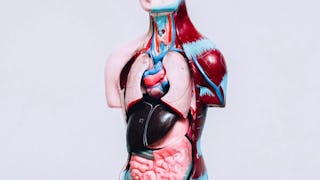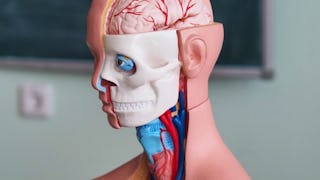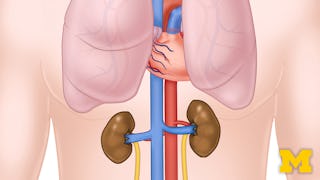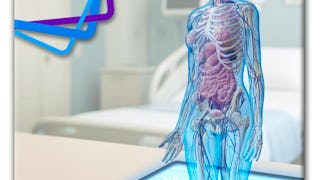This course provides a foundational understanding of human anatomy and physiology, exploring how body structures and systems work together to maintain health.


Foundations of Human Anatomy and Physiology
This course is part of Interactive 3D Anatomy & Physiology: A Gamified Experience Specialization



Instructors: Maxwell Boardman
Included with 
Recommended experience
What you'll learn
Learners will understand how body structure supports function in anatomy and physiology
Learners will explore how cells, tissues, and organs work together to maintain homeostasis.
Skills you'll gain
Details to know

Add to your LinkedIn profile
March 2025
7 assignments
See how employees at top companies are mastering in-demand skills

Build your subject-matter expertise
- Learn new concepts from industry experts
- Gain a foundational understanding of a subject or tool
- Develop job-relevant skills with hands-on projects
- Earn a shareable career certificate

There are 2 modules in this course
This Module introduces the foundational concepts of anatomy and physiology (A&P), providing a clear understanding of how the human body is structured and functions. Learners will explore the relationship between anatomy (structure) and physiology (function), learn essential anatomical terminology for describing body parts and their relationships, and examine the hierarchical organization of the body from cells to organ systems. These concepts are critical for understanding the complexity of the human body and its ability to maintain balance and respond to changes.
What's included
4 videos1 reading3 assignments
This lesson explores three foundational concepts critical to understanding how the human body operates: homeostasis, cell functions, and tissues. Students will learn how homeostasis maintains a stable internal environment by regulating factors like temperature and blood sugar levels, using feedback mechanisms to adapt to changes. The lesson also examines the cell as the smallest unit of life, detailing its structure, organelles, and key functions that support energy production, waste management, and communication. Finally, students will explore the four main types of tissues, epithelial, connective, muscle, and nervous tissue, each with specialized roles that support movement, protection, communication, and structure. Together, these concepts provide a comprehensive view of how the body is organized and functions at its most basic levels.
What's included
3 videos4 assignments
Earn a career certificate
Add this credential to your LinkedIn profile, resume, or CV. Share it on social media and in your performance review.
Offered by
Explore more from Basic Science
 Status: Free Trial
Status: Free TrialRice University
 Status: Free Trial
Status: Free TrialRice University
 Status: Free Trial
Status: Free TrialUniversity of Michigan
 Status: Free Trial
Status: Free Trial
Why people choose Coursera for their career





Open new doors with Coursera Plus
Unlimited access to 10,000+ world-class courses, hands-on projects, and job-ready certificate programs - all included in your subscription
Advance your career with an online degree
Earn a degree from world-class universities - 100% online
Join over 3,400 global companies that choose Coursera for Business
Upskill your employees to excel in the digital economy
Frequently asked questions
Access to lectures and assignments depends on your type of enrollment. If you take a course in audit mode, you will be able to see most course materials for free. To access graded assignments and to earn a Certificate, you will need to purchase the Certificate experience, during or after your audit. If you don't see the audit option:
The course may not offer an audit option. You can try a Free Trial instead, or apply for Financial Aid.
The course may offer 'Full Course, No Certificate' instead. This option lets you see all course materials, submit required assessments, and get a final grade. This also means that you will not be able to purchase a Certificate experience.
When you enroll in the course, you get access to all of the courses in the Specialization, and you earn a certificate when you complete the work. Your electronic Certificate will be added to your Accomplishments page - from there, you can print your Certificate or add it to your LinkedIn profile. If you only want to read and view the course content, you can audit the course for free.
If you subscribed, you get a 7-day free trial during which you can cancel at no penalty. After that, we don’t give refunds, but you can cancel your subscription at any time. See our full refund policy.
More questions
Financial aid available,
